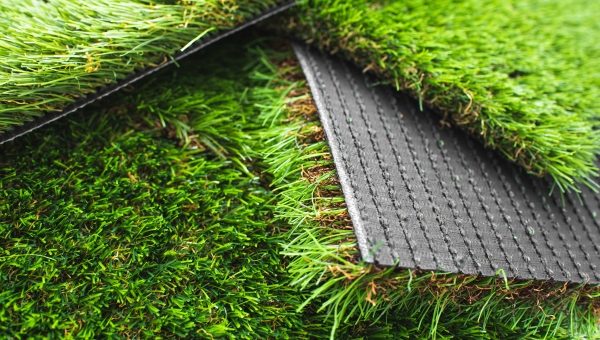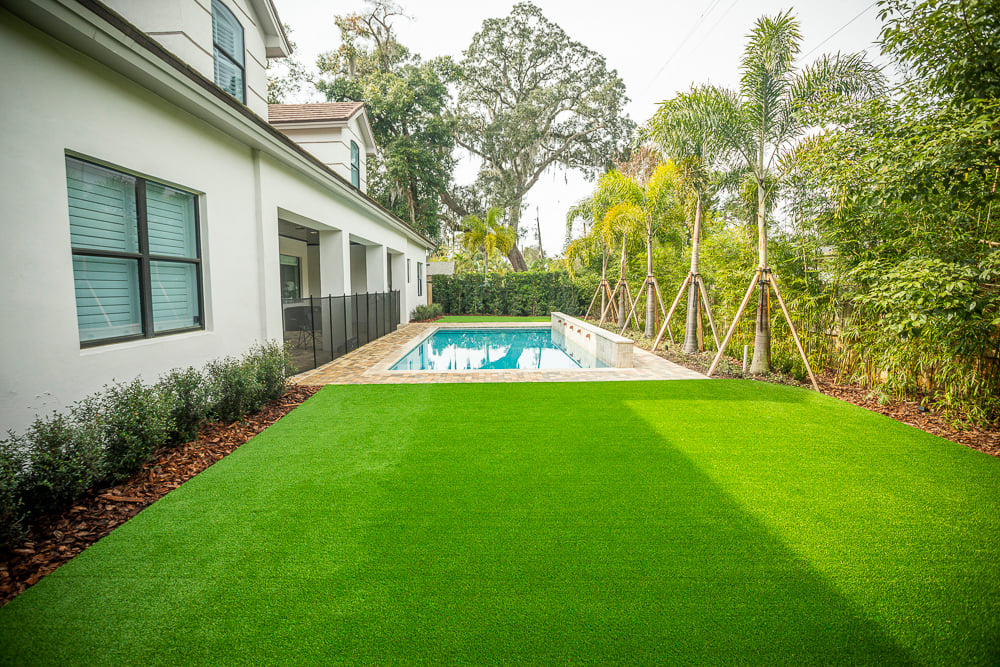Look Into the Environmental Perks of Opting for Artificial Grass Solutions
The adoption of man-made lawn remedies offers a compelling chance to attend to pushing ecological obstacles. By significantly minimizing water use and decreasing the application of hazardous chemicals, these options not only promote sustainable landscaping but likewise safeguard regional environments.
Water Preservation Perks
Among one of the most substantial benefits of synthetic grass is its capacity to save water. Standard lawn lawns require substantial irrigation, specifically in locations susceptible to drought or water restrictions. On the other hand, artificial lawn does not require watering, substantially minimizing the general demand for water sources. This attribute is especially helpful in arid regions where water deficiency is a pushing issue.
By getting rid of the need for normal watering, synthetic grass adds to lasting landscape practices and aids mitigate the ecological impact of extreme water intake. Additionally, the preservation of water includes the decrease of drainage, which can result in dirt disintegration and waterway contamination.
In addition, the installment of artificial grass permits home owners and districts to designate water resources extra efficiently, concentrating on vital usages such as drinking water and agriculture. The shift in the direction of synthetic grass not only promotes responsible water usage however likewise straightens with broader environmental goals focused on protecting natural resources.
As neighborhoods significantly focus on sustainability, the water preservation advantages of synthetic grass offer an engaging instance for its fostering in commercial and residential landscaping projects.
Decreased Chemical Usage
The change to synthetic grass dramatically lowers the dependence on chemical therapies frequently utilized in natural grass maintenance. Traditional lawn monitoring typically involves the application of herbicides, chemicals, and fertilizers to advertise growth and control insects. These chemicals can pose threats to human wellness, regional wildlife, and the setting, adding to soil and water contamination.
On the other hand, fabricated grass eliminates the demand for these unsafe compounds. Once mounted, it needs minimal maintenance, mostly consisting of routine cleansing and occasional infill replenishment. This reduction in chemical use not only profits the instant environment however also adds to wider ecological stability. By minimizing the launch of synthetic substances into the environment, synthetic lawn promotes much healthier soil and water supply.
In addition, the absence of chemical overflow related to synthetic lawn installations assists shield local rivers from air pollution, supporting aquatic life and keeping biodiversity. Arizona turf. As neighborhoods significantly prioritize sustainable methods, choosing fabricated turf presents a feasible remedy that straightens with environmental conservation goals. Through this shift, homeowner can enjoy lush eco-friendly areas without jeopardizing environmental wellness, leading the way for an extra lasting future
Reduced Carbon Impact

Moreover, the setup of synthetic grass can lead to significant water preservation. All-natural grass require considerable amounts of water for irrigation, which not only contributes to the carbon footprint related to water extraction and treatment but also strains local water resources. In comparison, synthetic grass needs marginal upkeep, calling for no watering, therefore considerably decreasing water usage and its associated energy prices.
In addition, the long life of synthetic grass adds to its decreased carbon influence. With a life-span of approximately 15 years or even more, the demand for constant substitutes is reduced, leading to less waste and reduced power usage in manufacturing and taking care of typical lawn options. In general, artificial turf offers a sustainable option for environmentally conscious landscape design.
Environment Preservation
Habitat conservation is a vital consideration in the debate over landscape design options, particularly when contrasting man-made turf to all-natural find here turf. Natural yard yards typically need considerable maintenance, consisting of making use of herbicides, plant foods, and pesticides, which can adversely affect local ecosystems. These chemicals can leach right into the soil and rivers, harming native vegetation and fauna and interfering with local environments.
In comparison, synthetic lawn presents a possibility to reduce the environmental impact of landscaping. By choosing for artificial turf, home owners can reduce the interruption of natural habitats connected with typical lawn care methods. Synthetic grass gets rid of the demand for harmful chemicals, consequently shielding nearby read the article wildlife and preserving the stability of bordering ecological communities. The installation of synthetic grass can lead to the conversion of previous lawn locations right into even more biodiverse landscapes, such as pollinator yards or indigenous plant areas, which can support local wildlife.
Inevitably, the change to fabricated lawn not just conserves water and reduces upkeep initiatives yet likewise promotes a much more unified connection between human tasks and the natural surroundings, advertising environment preservation at the same time.
Long-Term Sustainability
Lasting sustainability is a critical consider examining the advantages of synthetic grass over standard yard lawns. One of one of the most considerable benefits of synthetic grass is its resilience; it can last up to 15-20 years with very little maintenance, whereas natural turf calls for constant reseeding and substitute. This durability lowers the requirement for constant sources, such as water, fertilizers, and chemicals, which are vital for maintaining a healthy and balanced turf lawn.
In addition, synthetic grass adds to a decrease in carbon emissions connected with lawn treatment tools. Conventional grass typically call for gas-powered mowers, leaners, and blowers, every one of which contribute to air contamination. Arizona turf. In contrast, synthetic grass eliminates the requirement for such tools, promoting a cleaner atmosphere
In addition, the production of synthetic lawn increasingly uses recycled products, boosting its sustainability account. As manufacturers embrace eco-friendly methods, the ecological impact of artificial turf continues to reduce.

Conclusion
The fostering of artificial lawn options presents substantial environmental benefits, including significant water conservation, lowered reliance on harmful chemicals, and a reduced carbon impact. Fabricated turf help in maintaining natural environments by minimizing land disturbance and advertising lasting sustainability through the use of sturdy materials. Collectively, these variables underscore the capacity of man-made lawn to contribute positively to ecological my response wellness and offer a feasible choice to traditional landscaping methods in a significantly resource-conscious world.
In contrast, man-made lawn does not require watering, considerably minimizing the total need for water sources. By minimizing the release of synthetic substances right into the ecological community, man-made grass advertises much healthier dirt and water systems.
In addition, the installment of artificial turf can result in substantial water conservation. In contrast, artificial turf needs minimal upkeep, calling for no watering, thereby significantly decreasing water usage and its linked power costs.

Comments on “Choose Reliable Artificial Turf Companies Phoenix for Your Outdoor Needs”